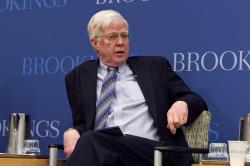Since the mid-1980s, Mexico has been engaged in a vigorous program of stabilization and structural adjustment. Its efforts have been often cited in the international community as a model for the type of reforms that Latin America needs to adopt if it hopes to mimic the growth experience of East Asia. Great progress was made in the macroeconomic sphere, with elimination of the public-sector budget deficit and sharply reduced rates of inflation; and the government enacted many of the structural reforms urged on the developing nations by international organizations. Mexico liberalized its trade regime, established both current and capital-account convertibility in its international transactions, privatized the national banks, and sharply reduced government regulation of the domestic financial system. As judged by the willingness of international investors to commit funds, the Mexican program appeared to be a huge success. By 1993-94, it was attracting large volumes of foreign direct investment, and portfolio capital poured in at record rates.
The actual gains in economic performance, however, have been disappointing. The economy did rebound from the 1986 recession, and the export sector has responded very strongly to the trade liberalization measures; but overall growth remained well below the rates achieved in the 1970s. And, when international investors, for a variety of reasons, soured on Mexico in 1994, it was hit by a severe external financing crisis and an economic collapse even worse than those of 1983 and 1986.
In retrospect, one of the most notable features of the Mexican experience was the failure of the reforms to move the economy in the direction of higher rates of domestic saving and capital accumulation. As shown in figure 1, domestic investment had by 1990 largely recovered from the depressed rates of the mid-1980s, but it did not reach the peak share of GNP achieved in the early 1980s, and it has remained far below the rates that have become common for East Asia. Even more surprising, the rate of national saving actually fell substantially, from an average 24 percent of GNP in 1981-85 to 16 percent by 1993. The decline in national saving is all the more remarkable given the sharply reduced public-sector deficit. With the deterioration of internal saving, Mexico became increasingly dependent upon net inflows of foreign resources, averaging in excess of 6 percent of GNP in 1992-94, to finance investment. Several observers have pointed to the low rate of saving and the consequent excessive dependency on external financing as fundamental factors behind the peso crisis of 1994-95.



